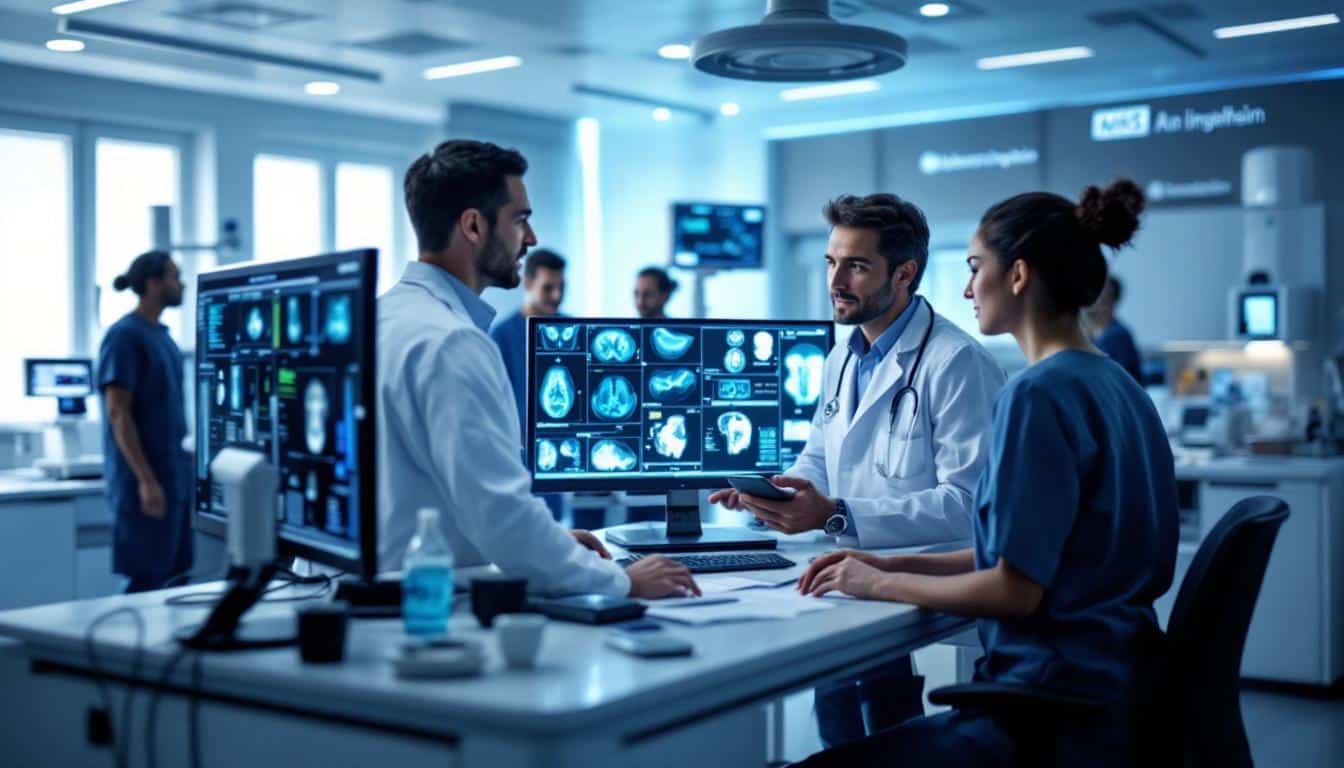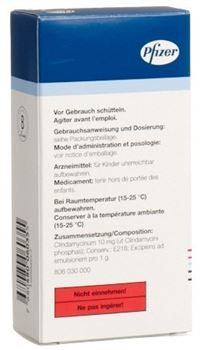Welcome to our weekly recap dedicated to health technologies.Every week, we explore the advancements and innovations shaping the future of the medical sector.Our goal is to provide you with a clear and relevant overview of essential developments.
This week, we highlight various topics ranging from artificial intelligence in medical documentation to the security of sensitive file transfers. Discover how Ambient Voice enhances the accuracy of medical notes through AI-based scribes capable of handling complex details. We also explore innovations from Upland Software that make faxing smarter by automating reference processing and document summary generation. Security remains a priority, and Coviant Software presents automated solutions to manage the diversity of data and regulations concerning file transfer. Furthermore, learn how Real Time Medical Systems addresses the issue of readmissions through better alignment of acute and post-acute care. Don’t miss our analysis on initiatives from the FHIR Business Alliance aimed at strengthening business-centered implementation. Finally, we offer a dive into the podcasts of Life Sciences Today and Healthcare IT Today to stay on top of current discussions in the sector.

Welcome to our weekly recap dedicated to the latest innovations and news in the field of health information technology. This week, we explore major advancements, funding initiatives, and trends shaping the future of digital health. Let’s dive into the details to keep you informed about essential developments.
What are the latest innovations in AI in medical records?
Artificial intelligence continues to revolutionize the management of medical records. Terry Ciesla from ScribeEMR emphasized the critical importance of accuracy in details, explaining to John Lynn why AI-based scribes must master complex and subtle information. This includes detecting rare diagnoses, documenting insurances, and learning the types of information that physicians often omit in their notes. These improvements not only allow for better data quality but also optimize healthcare professionals’ time, facilitating more effective patient care.
To learn more, check out our weekly summary on this significant advancement.
How are intelligent workflows transforming fax in healthcare?
Shawn Freligh from Upland Software discussed with John Lynn initiatives to make faxing smarter in the healthcare sector. By automating the processing of references, document summary generation, and ensuring that personally identifiable information (PII) is not sent to the wrong provider, Upland Software enhances the security and efficiency of medical communications. This digital transformation reduces human errors and accelerates the flow of crucial information, thereby strengthening care coordination among various stakeholders.
Discover more about these innovations in our January 2025 weekly summary.
What are the issues surrounding file transfer security in healthcare?
File transfer security is becoming increasingly complex with the diversity of data, sources, recipients, protocols, and regulations involved. Gregory Hoffer from Coviant Software explained to John Lynn how to manage these challenges through process automation. By automating secure transfers, Coviant Software ensures strict compliance with regulatory standards while minimizing the risks of data breaches. This proactive approach is essential for protecting sensitive patient information and maintaining trust in digital health systems.
For a detailed analysis, consult our digital health recap.
How can we reduce hospital readmissions through alignment of acute and post-acute care?
Phyllis Wojtusik from Real Time Medical Systems shared with John Lynn the requirements of the CMS TEAM model for care transitions starting next year. By aligning acute care with post-acute care, organizations can monitor risks and respond effectively to patient needs, thereby reducing readmissions. This strategy involves close collaboration between healthcare facilities and the use of real-time data to anticipate and manage potential complications, ensuring continuity of care and better quality of life for patients after discharge from the hospital.
To learn more, visit our page on medtech-rebondissent-apres-que-trump-mette-la-plupart-des-tarifs-en-pause/”>actions of the pharmaceutical and medtech sectors.
What is the direction of the FHIR Business Alliance?
The FHIR Business Alliance focuses on the commercial use cases of FHIR (Fast Healthcare Interoperability Resources). John Lynn discussed with Duncan Weatherston from Smile Digital Health and Mario Hyland from AEGIS.net, Inc. the organization’s efforts to bring a strong commercial focus to FHIR implementation. By emphasizing business needs, the alliance aims to facilitate broader and more effective adoption of FHIR, enabling better interoperability among health systems and fostering innovations that directly address the business challenges of the medical sector.
More details are available in our January 2025 weekly summary.
What is the Brain on a Chip podcast from Life Sciences?
The podcast Life Sciences Today features a fascinating discussion with Drs. Nisim Peretz and Nir Waiskopf from Itay&Beyond. They explore the development of brain-like devices on a chip, a technology that, although it seems to come from science fiction, has the potential to revolutionize the modeling of psychiatric disorders and predict the effectiveness of new compounds in the brain. This innovation could transform medical research by providing more precise and personalized models for treatment development, thus accelerating the drug discovery process and improving outcomes for patients.
Discover this episode in our weekly summary.
What trends in Health IT are declining?
In the podcast Healthcare IT Today, John and Colin Hung debated the trends in Health IT that have lost popularity. Technologies like blockchain, surprise billing, and reputation management no longer receive the attention they once deserved. This decline in interest can be attributed to various factors, including implementation challenges, high costs, and less impactful results than expected. However, some of these technologies could see a revival as new solutions emerge to overcome current barriers.
For an in-depth analysis, check out our weekly summary.
Why is the landscape of cyber risks evolving?
Recent data breaches at Change Healthcare and Oracle Health illustrate a concerning trend: attackers are increasingly exploiting vulnerabilities in third-party software. Lorren Pettit from GeroTrend Research emphasizes that this forces healthcare providers to strengthen their vendor risk management. Automating risk management processes and continuously assessing third-party partners are becoming essential to prevent data breaches and protect sensitive patient information. This evolution of the cyber risk landscape requires heightened vigilance and more robust security strategies.
To learn more, consult our section on digital security.
What challenges do health technology vendors face regarding regulatory deadlines?
With unavoidable deadlines for prior authorization, ePrescribing, and information blocking, health technology vendors are under pressure to align their developments with provider requirements. Dr. Nick Barger from DrFirst states that vendors must strengthen their development pipelines and ensure that proposed solutions genuinely meet provider needs. Failure to meet these deadlines could result in financial penalties and a loss of trust among end-users. Proactive planning and close collaboration with regulators are essential to successfully navigate this complex regulatory landscape.
For more information, visit our weekly summary.
How is immersive technology redefining education in nursing?
Faced with shortages of teaching staff and declining enrollments, the nursing sector seeks innovative solutions. Julie Stegman from Wolters Kluwer Health described the role of virtual reality (VR) in better preparing students for the nursing field. By offering immersive simulations, VR allows students to practice complex clinical scenarios in a controlled environment, thereby enhancing their practical skills and confidence before entering the job market. This technological approach not only helps bridge the labor gap but also reduces the turnover rate of new nurses by providing more comprehensive and engaging training.
For a more in-depth analysis, check out our weekly summary.
What opportunities for funding and mergers-acquisitions are emerging in the healthcare sector?
The healthcare sector is seeing sustained activity in funding and mergers-acquisitions. The virtual care provider AvaSure has acquired Nurse Disrupted, a platform for virtual nursing care in hospital and home environments. Additionally, Layer Health, a provider of medical record review software, raised $21 million in its Series A, while Taxo, specialized in extracting administrative health data, secured $5 million in seed funding. Finally, Marit Health, a platform for sharing physician salaries, obtained $3.2 million in seed funding. These investments reflect a growing confidence in innovative health technologies and their potential to transform healthcare.
For more details on these developments, check out our section on Funding and M&A.
How can you stay informed through daily newsletters in Health IT?
Stay on top of the latest news in Health IT by joining thousands of your peers in health and health IT who subscribe to our daily newsletter. Receive fresh stories, in-depth analyses, and essential updates directly in your inbox, allowing you never to miss an important development in the sector.
Sign up today and stay informed with our daily newsletter.
What are the highlights of this week in Health IT?
This week has been rich in developments for the digital health sector. Among the highlights, AvaSure’s acquisition of Nurse Disrupted marks a significant step toward integrating virtual nursing into hospital and home settings. Additionally, fundraising by Layer Health and Taxo illustrates the enthusiasm for automated data extraction and medical record review solutions. Furthermore, advancements in immersive technologies for nursing education show a commitment to continuous improvement in clinical skills. Finally, discussions around file transfer security and regulatory challenges highlight the importance of compliance and data protection in a constantly evolving digital landscape.
For a complete overview, visit our weekly summary.
What cybersecurity risks should health providers watch out for?
Cybersecurity attacks targeting health providers are becoming increasingly sophisticated, exploiting vulnerabilities in third-party software. Recent breaches at Change Healthcare and Oracle Health illustrate this growing threat. Providers must strengthen their third-party risk management strategies by implementing automated processes to assess and monitor external partners. Adopting robust security protocols and providing ongoing training for employees are essential to prevent breaches and protect sensitive patient data. Additionally, increased collaboration with cybersecurity experts can help anticipate and respond swiftly to emerging threats.
For more information on digital health security, check out our file security directory.
What are the benefits of immersive technologies in nurse training?
Faced with the challenges of faculty shortages and declining enrollments, immersive technologies such as virtual reality (VR) play a crucial role in nursing education. Julie Stegman from Wolters Kluwer Health demonstrated how VR allows students to simulate complex clinical scenarios, providing a practical and engaging learning experience. This innovative method not only enhances students’ technical skills but also boosts their confidence and mental preparation for real-world settings. By integrating these technologies into educational programs, institutions can attract more students and reduce the turnover rate of new nurses.
To discover the latest innovations in nursing education, check out our weekly summary.
How do acquisitions influence the telehealth market?
The acquisition of Nurse Disrupted by AvaSure is a striking example of how mergers and acquisitions influence the telehealth market. By integrating virtual nursing platforms, AvaSure strengthens its market position and expands its care delivery capabilities in home and hospital settings. These strategic moves allow telehealth companies to diversify their offerings, improve operational efficiency, and more comprehensively meet patient needs. Furthermore, these acquisitions stimulate innovation by combining the expertise and technologies of different entities, paving the way for new integrated care solutions.
For a detailed analysis of recent acquisitions, visit our Funding and M&A section.
What are the current challenges of salary-sharing platforms for physicians?
Salary-sharing platforms for physicians, such as Marit Health, face various challenges, including data privacy, information transparency, and cultural resistance to disclosing compensation. Marit Health recently secured $3.2 million in seed funding, reflecting investor confidence in the potential of these platforms to transform human resource management in the medical field. By overcoming obstacles related to data protection and promoting a culture of transparency, these platforms can offer significant benefits, such as pay equity, talent attraction, and better retention of medical personnel.
To learn more about innovative platforms, check out our weekly summary.
How do regulations influence the development of digital health solutions?
Regulations play a decisive role in the development of digital health solutions. Deadlines for prior authorization, ePrescribing, and information blocking place constraints on health technology vendors, forcing them to align their products with strict compliance standards. Dr. Nick Barger from DrFirst emphasizes the importance for vendors to strengthen their development pipelines and collaborate closely with regulators to ensure that offered solutions effectively meet provider needs. This compliance not only ensures the legality of operations but also strengthens end-users’ trust in the technologies adopted.
For an in-depth analysis of regulatory challenges, visit our weekly summary.
What are the benefits of integrating telehealth solutions into hospital care?
Integrating telehealth solutions into hospital care offers numerous benefits, including improved care coordination, reduced wait times, and better management of hospital resources. AvaSure, for example, has demonstrated how virtual nursing platforms can support hospital teams by providing quick access to specialized care remotely, thereby reducing the workload on nurses and improving patient outcomes. Additionally, these solutions promote greater flexibility in care delivery, allowing hospitals to quickly adapt to fluctuations in demand and maintain a high level of care quality, even during crises.
To discover the benefits of telehealth solutions, check out our weekly summary.
How are emerging technologies shaping the future of health?
Emerging technologies, such as artificial intelligence, virtual reality, and immersive devices, play a key role in transforming the health sector. These innovations allow for better customization of care, increased efficiency of medical processes, and overall improvement of the patient experience. For example, VR devices used in nursing training provide realistic simulations that better prepare students for real clinical challenges. Similarly, AI-based solutions enhance the accuracy of diagnostics and optimize medical record management. By integrating these technologies, the health sector can not only address current needs but also anticipate future challenges, ensuring a continuous evolution towards smarter and more sustainable healthcare.
For an overview of emerging technologies, visit our weekly summary.
What are the impacts of digital health funding on innovations?
Funding in the field of digital health has a significant impact on innovation and the development of new solutions. Recent fundraising by Layer Health, Taxo, and Marit Health illustrates investor confidence in the potential of health technologies to transform care. These funds allow companies to develop new features, improve their existing products, and accelerate their market expansion. Furthermore, investments in digital health stimulate research and development, fostering the emergence of innovative solutions that address current challenges in the medical sector. By funding these initiatives, investors contribute not only to economic growth but also to improving the quality of healthcare provided to patients.
To learn more about funding opportunities, check out our Funding and M&A section.
What are the challenges of implementing FHIR in health systems?
Implementing FHIR (Fast Healthcare Interoperability Resources) presents several challenges for health systems. One of the main obstacles is compatibility with existing systems, which may not be designed to integrate the new FHIR standards. Additionally, training staff and managing organizational change are essential for ensuring successful adoption. The FHIR Business Alliance is actively working to overcome these challenges by providing clear guidelines and facilitating collaboration among various stakeholders in the sector. By focusing on commercial use cases, the alliance helps organizations tailor FHIR to their specific needs, thus ensuring effective interoperability and overall improvement of clinical workflows.
For a detailed analysis of FHIR challenges, check out our January 2025 weekly summary.
How do virtual reality platforms improve nurse retention?
Virtual reality (VR) platforms play a crucial role in improving nurse retention by providing immersive and engaging training. Julie Stegman from Wolters Kluwer Health explained how VR prepares students to face complex clinical situations by simulating realistic environments. This interactive learning method not only strengthens nurses’ technical skills but also increases their confidence and job satisfaction. By reducing the stress associated with the first days on the job and improving practical skills, VR contributes to better retention of nursing staff, thus reducing turnover rates and ensuring continuity of quality care for patients.
To learn more about the benefits of VR in nursing training, check out our weekly summary.
This week, the health technology sector has once again demonstrated its dynamism and constant innovation. Advancements in medical artificial intelligences, such as AI-based scribes capable of handling complex details, highlight the importance of accuracy and efficiency in medical documentation.
Meanwhile, the integration of intelligent workflows and digital fax illustrates how traditional technologies can be reinvented to meet the current needs of the sector. The focus on file transfer security also reflects a growing awareness of potential threats and the need to strengthen data protection measures.
The emphasis on reducing hospital readmissions through better coordination between acute and post-acute care highlights the importance of care transition models for improving patient outcomes. Similarly, initiatives around FHIR demonstrate a commitment to open standards to promote interoperability and operational efficiency in the health sector.
Discussions around immersive technologies in nursing education show significant potential to transform training and address challenges related to personnel shortages. Additionally, recent activities around funding and mergers-acquisitions reveal economic vitality in the field, offering new opportunities for innovative players.
Finally, the challenges related to cybersecurity and third-party risk management remind us of the importance of staying vigilant against evolving threats. In summary, this week has been rich in developments that not only strengthen current capabilities but also pave the way for promising future innovations in the field of health.














